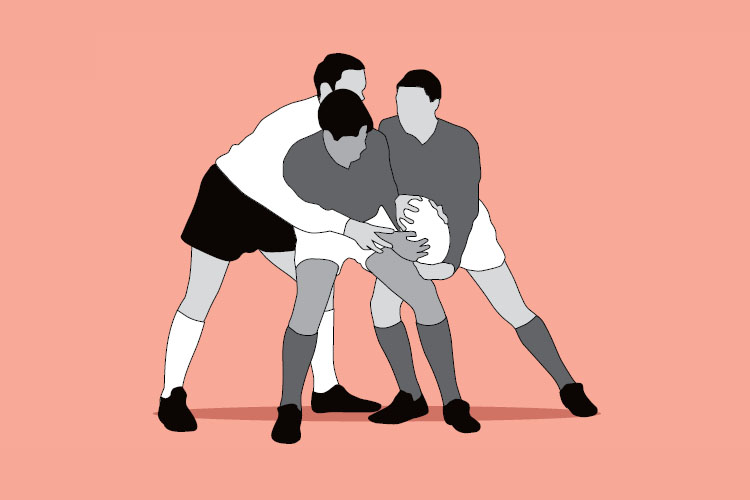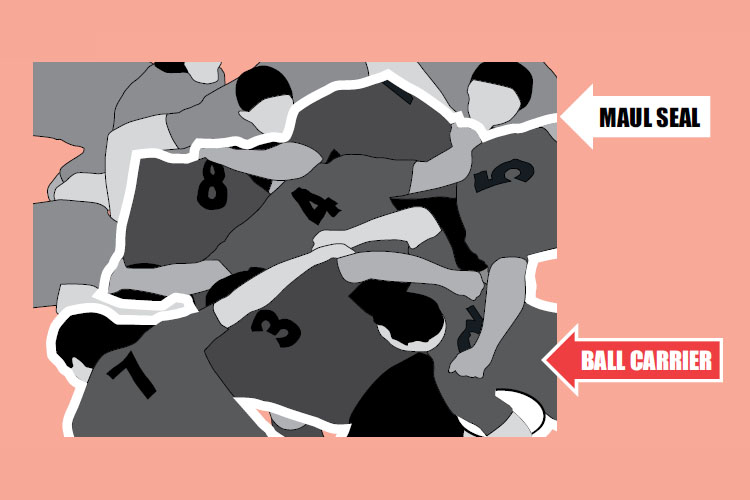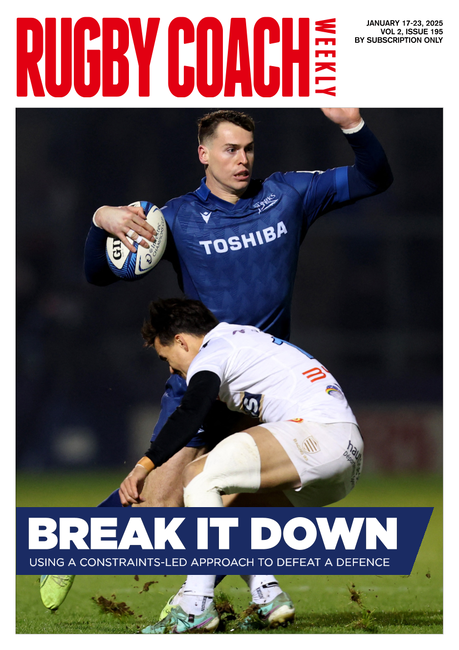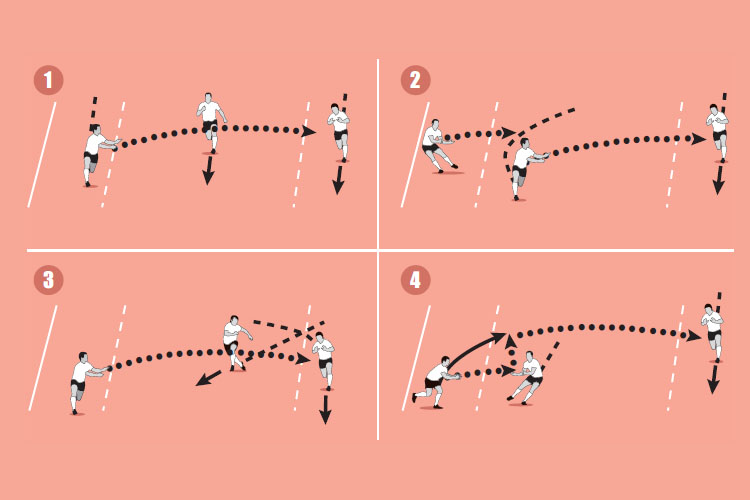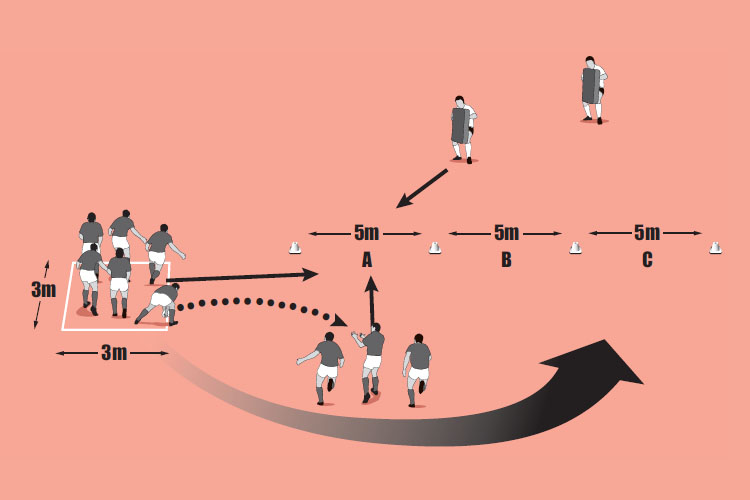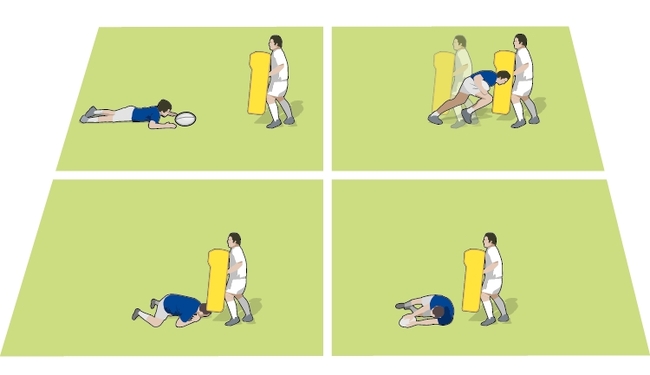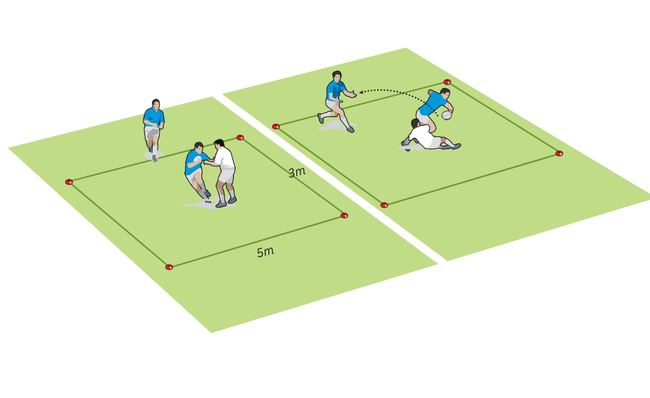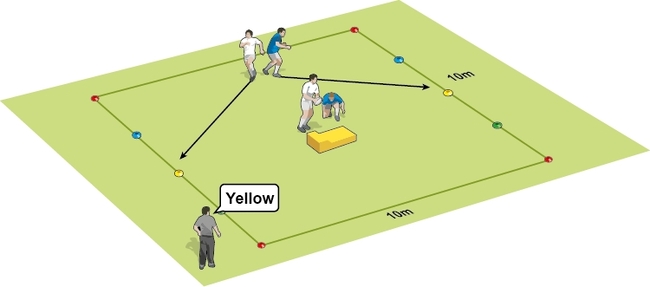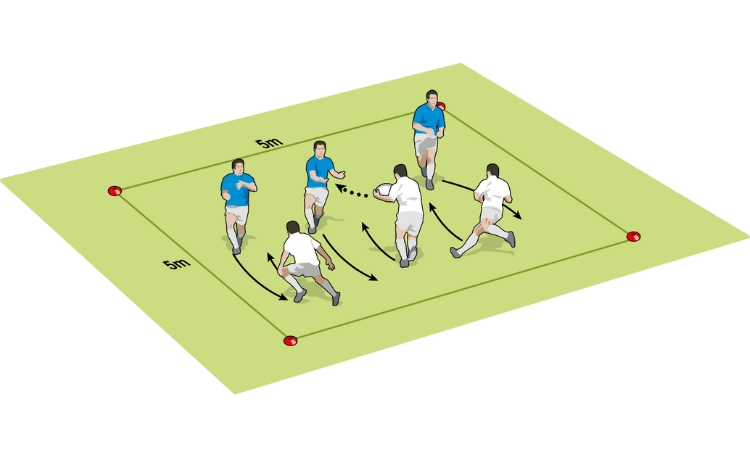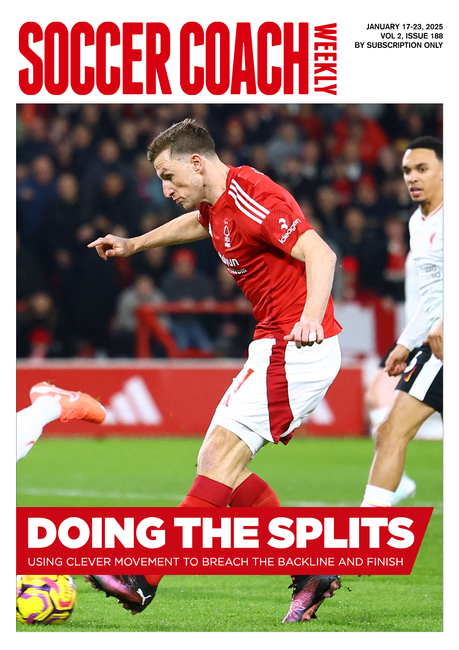Dynamic mauling
Despite defenders being able to pull it down, mauling is still very much alive and “driving”. Unlike a ruck, it is dynamic – because it moves forward, defenders have to move back. The key is to ensure that no player is so tightly bound that, by pulling him down, the whole maul goes down with him.
Warm up time: 5-7
Session time: 10-15
Development time: 10-15
Game time: 15-20
Warm down time: 5-7
What to think about
Key maul laws- A maul can be brought down by a defender pulling a player down between his shoulders and his hips.
- Once the maul is started, if the defence disengages or removes players so there are no defenders left in contact with the maul, the maul continues. In other words, the attacking players bound in, in front of the ball are not “offside”.
- If the attackers voluntarily disengage, then the maul is over.
- If the maul is brought down and the ball goes to ground the maul is over.
- The ball must be with the LAST player in the attacking maul. New players cannot arrive and go past the ball.
set-up
- Ball carrier: move the ball to the back of the maul.
- Bind onto your team mates to form a “seal” around the ball. Be loose enough to let go and fall away if tackled.
- Face forwards in the maul.
- Drive forwards, then shift sideways before driving forward again.
What you get your players to do
Give two players a ball. A defender must try to drag them down. Start in a very small area, then increase the size to a 5m square so the ball carrier and his supporter have to move around. Next join two groups together to create a four v two.Development
Split into groups of six. Put two groups in the middle of the box facing each other. Throw a ball to one team (just behind them) and let play develop. Start at walking pace. The ball winners should aim to form a seal in front of the ball carrier, drive forward and keep changing the point of attack. Only allow three of the opposition to compete in contact at first.Related Files
Game situation
Put five attackers and three defenders in the corner box of a nine box grid. Throw the ball over the defenders to the attackers. They must maul the ball forward and across into the centre box. From the middle box they need to go left or right. If they go straight ahead into the next box, then a fourth defender joins the maul. If they go straight ahead again, another defender joins. This should encourage forward and sideways movement. Give the attackers two goes, then swap the teams.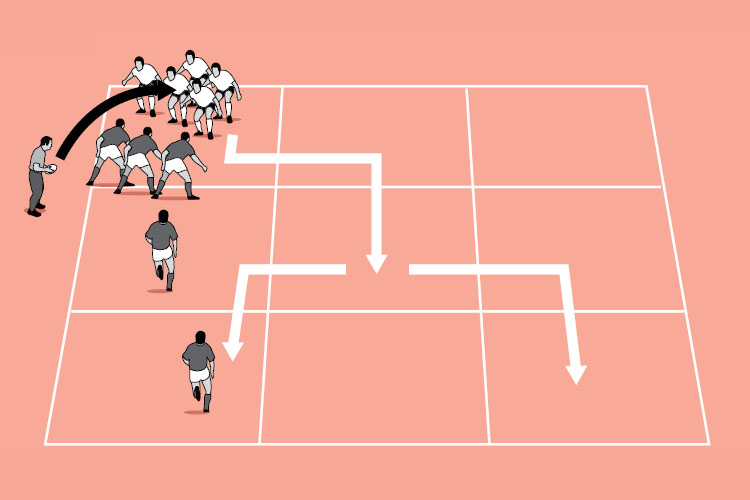
What to call out
- “Have a wide stance and keep moving”
- “Keep the ball away from the defence”
- “Talk. Tell your team mates where you are going”
- “Keep tight, but bind loose”
Newsletter Sign Up
Coaches Testimonials

Gerald Kearney, Downtown Las Vegas Soccer Club

Paul Butler, Florida, USA

Rick Shields, Springboro, USA

Tony Green, Pierrefonds Titans, Quebec, Canada
Subscribe Today
Be a more effective, more successful rugby coach
In a recent survey 89% of subscribers said Rugby Coach Weekly makes them more confident, 91% said Rugby Coach Weekly makes them a more effective coach and 93% said Rugby Coach Weekly makes them more inspired.
Get Weekly Inspiration
All the latest techniques and approaches
Rugby Coach Weekly offers proven and easy to use rugby drills, coaching sessions, practice plans, small-sided games, warm-ups, training tips and advice.
We've been at the cutting edge of rugby coaching since we launched in 2005, creating resources for the grassroots youth coach, following best practice from around the world and insights from the professional game.
